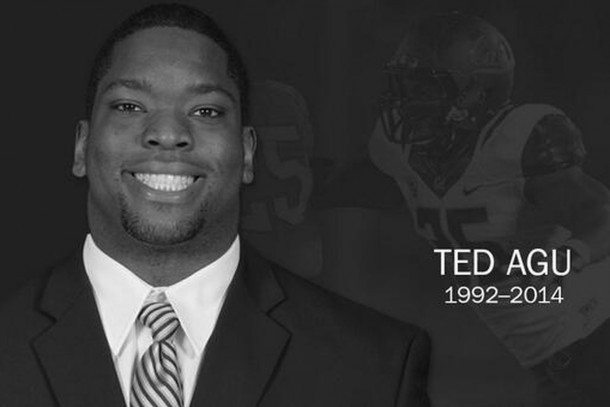The University of California-Berkeley has admitted liability in the 2014 death of a Golden Bear football player.
Ted Agu, a walk-on defensive lineman, died Feb. 7, 2014, following a conditioning workout in which players had to repeatedly sprint up and down a hill while jointly holding a rope. Following Agu’s death, his family brought a wrongful death lawsuit against the school, claiming that Cal was culpable for the 21-year-old’s death.
From the San Francisco Chronicle:
The admission comes after testimony in a lawsuit brought by Agu’s parents raised questions about the actions of Cal football personnel in the events that preceded his death. The testimony, given in confidential depositions, also detailed allegations that campus officials did not provide the Alameda County coroner’s office with all police and medical records after Agu died, including some that indicated he had sickle cell trait — a blood abnormality that experts believe can lead to death under extreme exertion.
The medical examiner’s office initially attributed Agu’s death to a heart condition that would not have presented the same symptoms as a crisis related to sickle cell trait.
The Chronicle has all the details of the incident and aftermath, and some of it is particularly damning. The Chronicle reports that Cal’s team doctor knew about Agu’s sickle-cell trait, which left him vulnerable to serious injury or death if he exerted beyond his typical level of exercise.
Meanwhile, former strength and conditioning coach Damon Harrington was apparently quite fond of pushing players past their limits.
“His are a whole different type of workout,” former defensive end Sione Sina said in a deposition, referring to Harrington’s workouts. “His are like some down South mental toughness. … It’s like, we got to push you to your edge and see if you can go even further.”
In addition to Harrington’s extreme methods, head athletic trainer Robert Jackson came under fire in the suit for not adequately addressing Agu’s needs during the rope drill.
Perhaps the most disturbing aspect of this story is the pervasive and harmful presence of groupthink: Other players saw one of their teammates struggling desperately but did not intervene. In any other context besides a testosterone-loaded football team, it would be second nature to suggest that everyone should stop and help the guy who appeared to be on the verge of passing out, or at least allow him to excuse himself from the drill.
Instead, everyone kept going as Agu faltered. Consider the perspective of one eyewitness to the drill:
Daniel Lasco, a running back and team captain at the time, was on the rope with Agu during the drill. He said he assigned Agu to lead their group up the hill, which required him at times to pull the other players behind him. Former offensive lineman Matt Cochran, who was injured and observed from the drill route’s periphery, described Agu falling multiple times and showing signs of fatigue beginning about midway through the workout.
After teammates noticed Agu struggling, Lasco took his place at the front of the rope. Lasco testified of his time leading the drill: “It felt like you were pulling three tires behind you. … When I was up there, I was like, ‘Oh, my God, I can’t believe I let him do this.’”
Jacobi Hunter, a former defensive tackle who was also injured that day and walked the route, testified that Jackson, the trainer, was looking directly at Agu when he fell, and did not offer aid.
About halfway up the hill on their last lap, Lasco testified, Agu finally stopped, bent over, fell to his knees, then curled into a fetal position. A few players said they helped him up and walked a few steps with him before he fell down again.
“It’s like something just pulled a battery out of him, and he just stopped working,” cornerback Trevellous Cheek said during his deposition.
Players said they threw water on Agu and yelled for team trainers.
So much of football’s culture is about “being a man,” which can easily be translated as “enduring extreme pain or discomfort (or both).” In that light, it makes sense players would expect each other to keep going even under dangerous physical duress. Toughness and perseverance are positive qualities, but when treated as the most important things in the world, they can lead to a perilous disregard for safety. Add in teams’ emphasis on brotherhood and togetherness, on not letting down your teammates, and it’s natural players would feel they can’t stop… even when they should.
Cal is at fault in Agu’s death for failing to note his sickle-cell trait and for pushing too hard in the workout, but football culture is culpable for making players think that finishing a conditioning drill is more important than preserving personal health or the health of a teammate.
[Deadspin]







